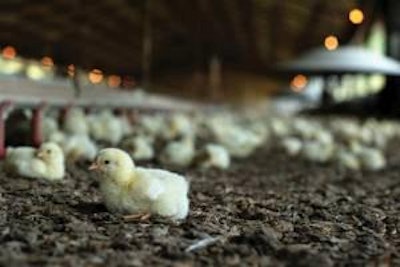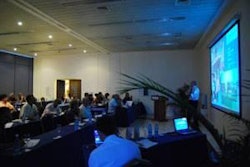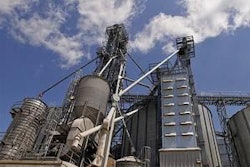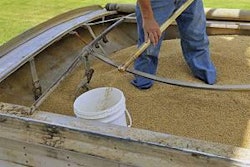
In the days leading up to chick delivery, managers must prepare to receive the consignment. This requires planning and attention to detail.
Preparation for receiving the next flock should begin the moment the previous flock of pullets is moved to the layer house. Loose pullets that may have escaped the moving crew must be caught and humanely disposed of. Sanitation is the primary consideration in the preparation of a house to receive the next flock of chicks. Dust and cobwebs must be blown down from rafters, ceiling, equipment and the walls. All organic material, including dead birds, manure and remaining feed in the feed lines, hoppers and feed bins must be removed and disposed of in a remote location and not dumped near the entrance to the house. Any equipment that can be removed from the house should be removed, sanitized, and stored in a clean storage area during the cleanout period.
The house must be washed down with hot water and detergent using a high pressure sprayer to thoroughly remove any remnants of organic matter. Water lines should be flushed and then charged with a strong sanitizing agent and allowed to remain in piping for at least 24 hours before re-flushing with potable water. All necessary repairs to the building must be completed, paying close attention to areas where rodents or free-flying birds may gain access, since they serve as reservoirs of numerous infections which can impact flocks. After a thorough wash- down, the clean house should be disinfected using a low-pressure sprayer or a fogger to dispense a quaternary ammonium compound in accordance with the manufacturer’s statutory label instructions. If required an approved insecticide can be dispersed before placement of clean litter in floor systems. Special provisions are required for organic floor flocks to conform to the requirements of the National Organic Plan.
The area surrounding the pullet house must be cleaned. Trash and remaining litter must be removed to prevent re-tracking of pathogens into the house. All vegetation growing close to the house must be clipped to ground level and grass must be mowed. The concrete aprons and perimeter areas surrounding the building should be disinfected. Rodent bait in approved receptacles should be placed outside the house and in work areas and storage stations inside the pullet house. Ideally preparations should be completed a few days prior to the arrival of the chicks. Down time is very beneficial in allowing bacteria and viruses that were not killed by the cleaning and disinfection procedure to loose virulence.
All cleaned equipment should be repaired as necessary, reassembled, reinstalled and tested. Electrical and watering installations must be tested.
Approximately 24 hours before the scheduled arrival of the chicks, house temperature should be raised to the recommended level. The air in the house will be at the desired temperature long before the cages or floor will attain an acceptable level, thus requiring a prolonged period of heating prior to placement of the flock. Rolls of chick paper must be placed on the floor of cages especially in the vicinity of nipples and a small amount of feed should be sprinkled on the paper before the chicks arrive. The feed troughs must be completely full to attract the chicks to the feeder system. The complete watering system including all nipples must be checked to confirm normal function with an acceptable rate of delivery.
High intensity (3-5 foot candles) of lighting is very important to help the young chick to locate feed and water. During the first two days 22 hours of light is recommended. If starting chicks in cages on two levels, ensure that house lighting illuminates the nipples on both levels. Lighting control clocks should be set to the recommended program.
Starting chicks in a clean, warm, bright environment will allow the flock to attain a strong start.

















